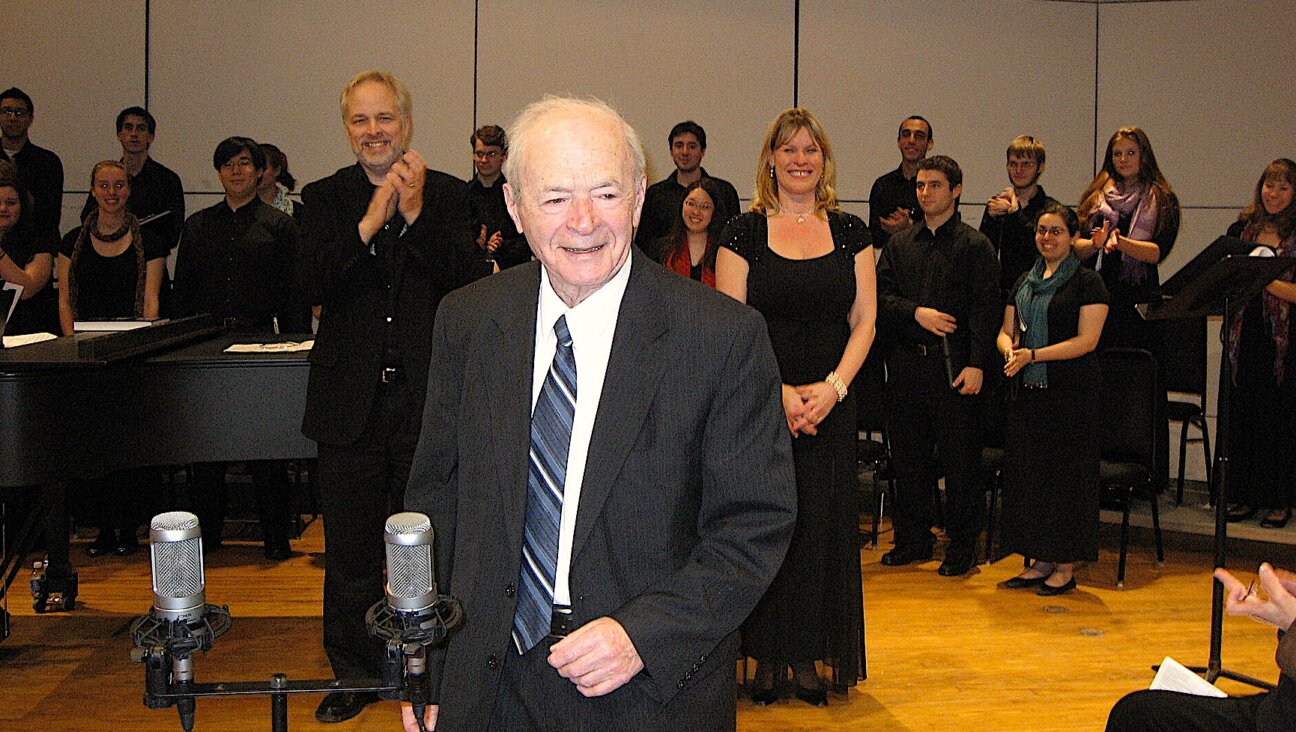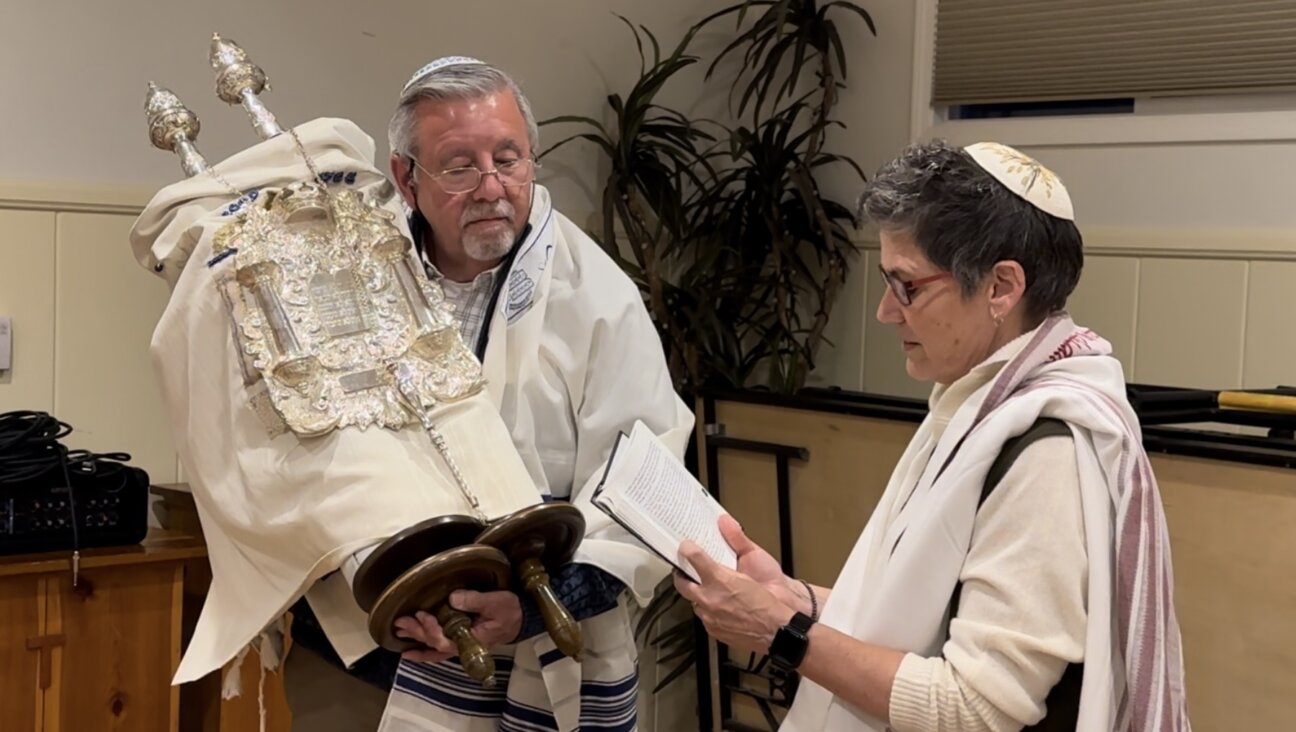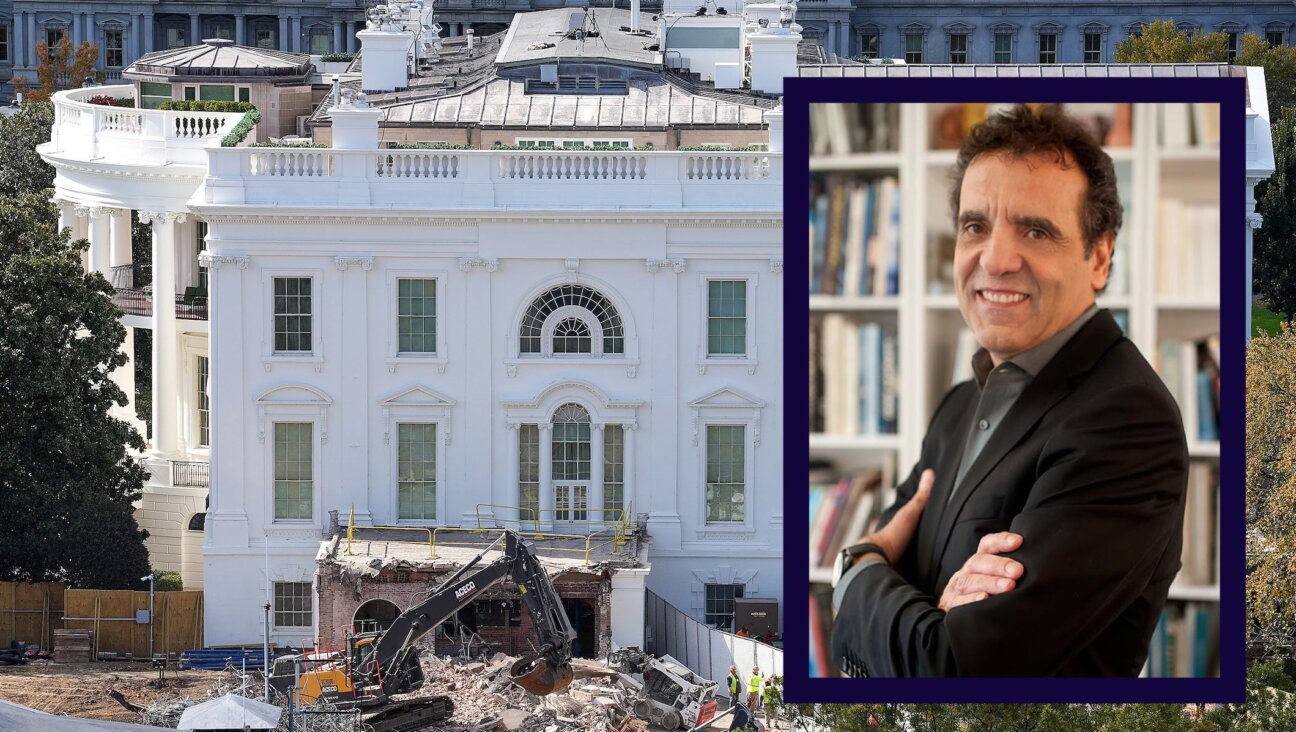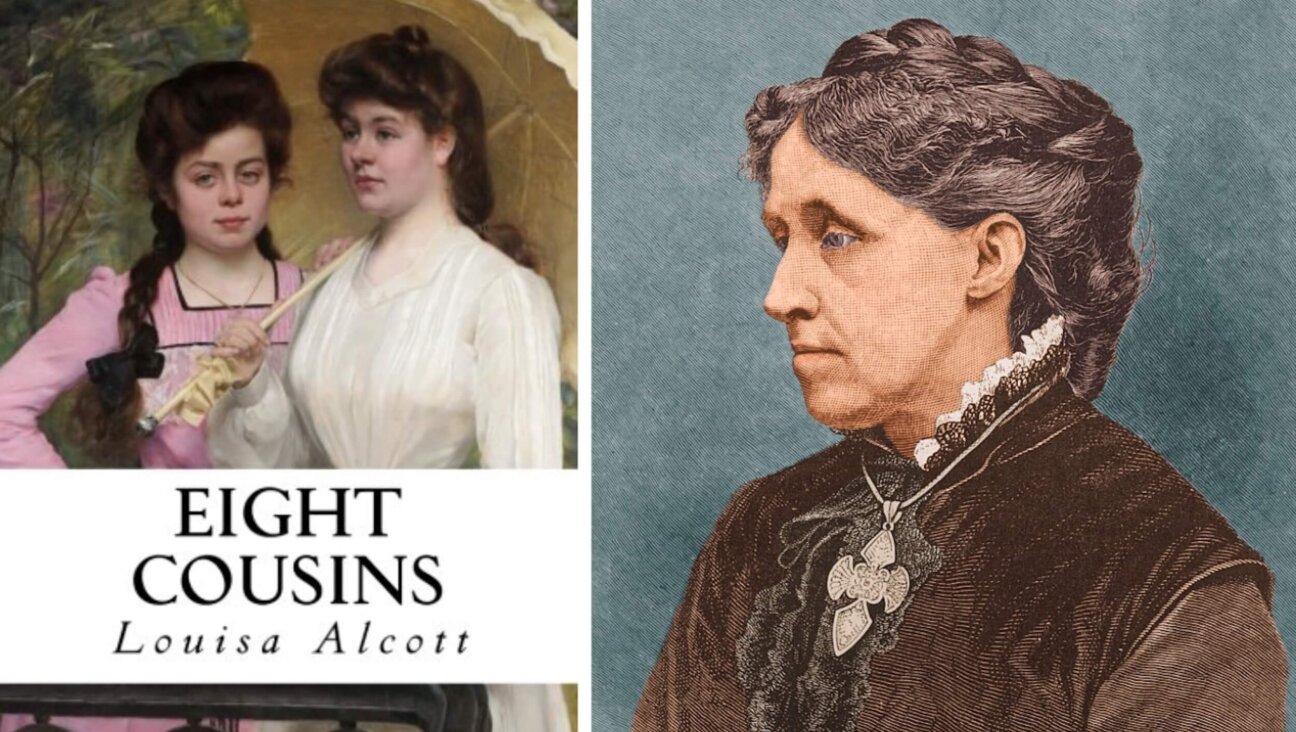What the Hasidic shtiebel meant for Jewish male immigrants
The intimate prayer room was often filled with camaraderie and a strong sense of belonging
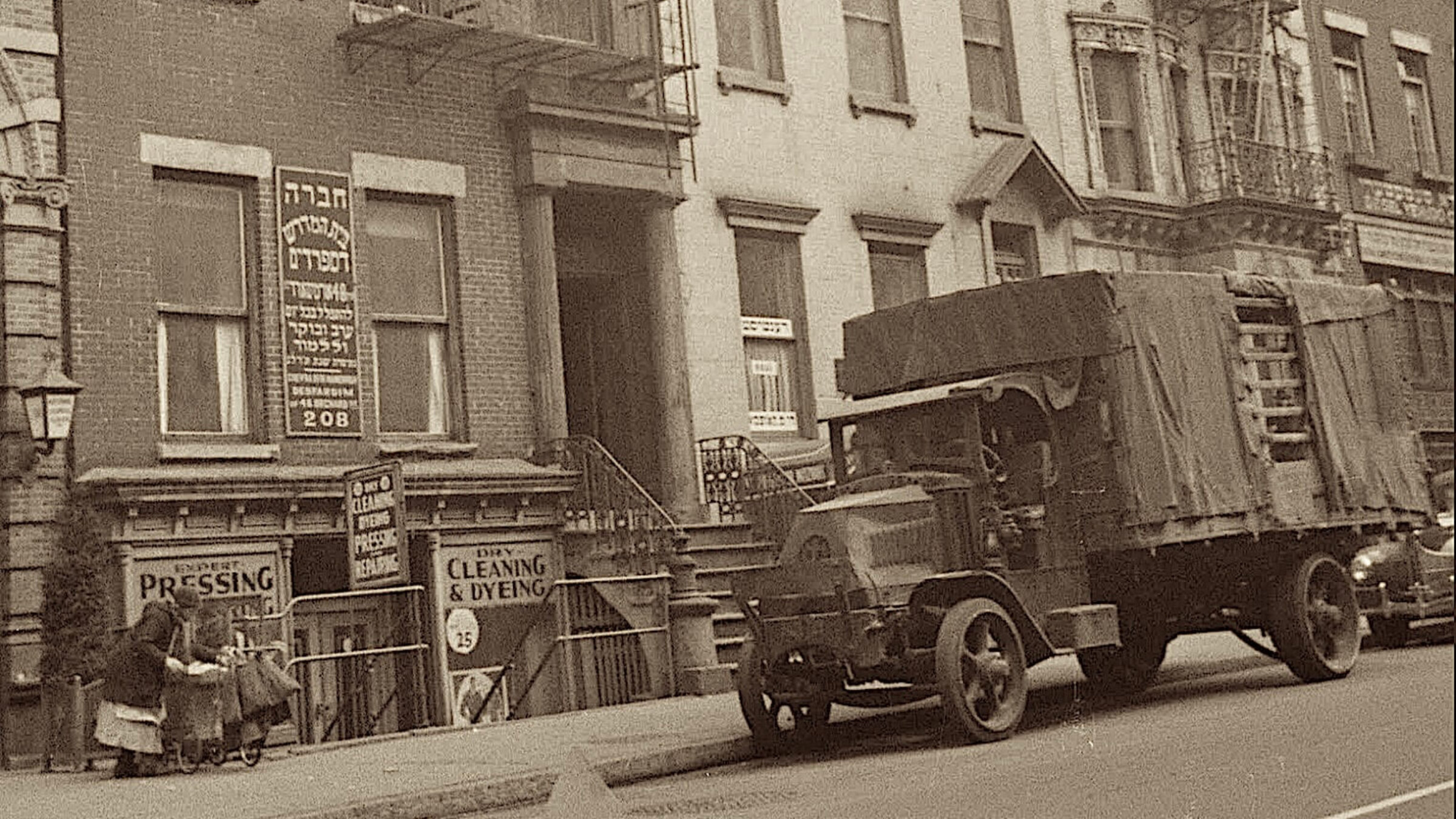
Beis Hamedrash DeSfardim, the second Hasidic shtiebel founded in New York, on East Broadway in NYC Photo by Tax Department Photographs
Walk down the right street, take the right staircase, and behind an unmarked door you might come across a shtiebel — an informal Jewish prayer room that serves as a gathering place for a small, close-knit congregation. Often tucked into the overlooked corners of a town or city, a shtiebel might be found in a modest hut on the outskirts, a tenement basement, a quiet storefront or even a rented room within a larger synagogue.
The shtiebel in Eastern Europe held a central place in Hasidic life. Most Hasidim lived far from their rebbe (Hasidic leader) and the court where he resided. These courts were sacred centers they might visit only once a year, and only for a brief day or two. In their daily lives, it was the shtiebel that sustained the spirit of Hasidism. Their unique culture was primarily expressed not in the presence of the rebbe, but within the familiar, humble walls of the shtiebel.
Hasidim began arriving in the United States in large numbers with the great wave of Eastern European immigration that began around 1880. In the absence of rebbes, who, for the most part, did not begin to arrive until the second decade of the twentieth century, Hasidism took root within the walls of the shtiebel. By 1924, when Jewish immigration slowed dramatically under the Johnson-Reed Immigration Act, immigrant neighborhoods like the Lower East Side were teeming with Hasidic shtieblach, each one a vibrant center of faith, fellowship and spiritual continuity.
Wandering through these shtieblach of the Jewish Lower East Side in the early 1930s, a journalist for the Forward observed their quiet power: “A Hasidic shtiebel, nestled along a Jewish street, draws Hasidim like a magnet… The Hasidic heart turns to the New York shtiebel as it does to the rebbe’s court. It is more than a meeting place; it is the soul of Hasidic life… The Hasid spends all his free hours there, while his wife, alone at home, waits.”
In a later reflection, the author added: “In every age and under all conditions, the Hasid remains bound to his shtiebel… To forsake it is to break from Hasidism — to become a stranger, a deserter, like a soldier who has abandoned his post.”
The shtiebel was more than a place for study and prayer. It was a second home, where men gathered morning and evening, forming a close-knit community marked by warmth and familiarity. Wealth and social standing held little weight here: a man of means and one of modest background might sit side by side, immersed in study, united by their shared commitment to faith and community. The atmosphere was both sacred and informal — part house of worship, part gathering place — filled with camaraderie and a strong sense of belonging.
On special occasions, the shtiebel echoed with song, shared meals and stories about the lives of great Hasidic rebbes. Its atmosphere left a deep impression on those who experienced it. In his book, The Legend of the Baal-Shem, the Jewish philosopher Martin Buber, who was strongly influenced by Hasidic life and thought, described it in vivid terms:
“There is something tender and sacred, something secret and mysterious, something unrestrained and paradisiacal” about the atmosphere of the shtiebel.
The American Hasidic shtiebel traces its beginnings to the first Eastern European synagogue established in New York in 1852, at a time when a small but steady stream of Jews from central Poland had begun arriving in the mid-1840s. Their journey was shaped in part by the harsh policies of Tsar Nicholas I, whose efforts to Russify the Jewish population disrupted traditional life. These included restrictions on Jewish communal autonomy, attempts to resettle Jews in agricultural colonies, and most devastatingly, the extension of conscription laws to central Poland in 1845, forcing Jewish boys into twenty-five years of military service. Out of this upheaval, the shtiebel would take root in the New World.
The first Eastern European synagogue in New York was initially organized as a shtiebel by Rabbi Abraham Joseph Ash of Semiatycze (in Yiddish: Semyatitsh), Poland, a 29-year-old Talmudic scholar and devoted Hasid of the Kotzker Rebbe. He gathered a committed group of fellow Polish immigrants — most of them Hasidim — to form a small congregation they named the Beys-Medresh. In true shtiebel fashion, it was located in the attic of a modest building on Bayard Street near the Bowery, in what would later become the Jewish Lower East Side. At the time, however, the neighborhood was known as Kleindeutschland, or “Little Germany,” a bustling enclave of German-speaking immigrants — Jews and Christians alike — primarily from the lands that would later unify as Germany in 1871, though others came from surrounding Central European regions as well.
In a letter published in 1857 in the leading Jewish periodical The Occident and American Jewish Advocate, Rabbi Ash proudly described the shtiebel he had helped establish. He likened it to a lily blooming in the wilderness of America — a sanctuary open each day to those who came to gather at its doors, filled to overflowing on Sabbaths and festivals with prayer and fellowship. The shtiebel, he wrote, was a place that stirred the heart and prepared the soul to stand before the Creator. Though its founders were few and its members materially poor, they were, in his words, “prominent with a liberal [generous] spirit.”
Over time, Rabbi Ash’s modest shtiebel grew into a fully established synagogue with its own building, eventually becoming the most prominent Orthodox synagogue on the Lower East Side. Renamed Beis Hamedrash Hagadol, it came to occupy an impressive structure on Norfolk Street, near Essex.
As the first formally ordained Eastern European rabbi to arrive in America, Rabbi Ash served as its spiritual leader and was recognized as the foremost rabbinic authority in New York during his lifetime. After his passing, leadership passed to Rabbi Jacob Joseph of Vilna, who not only served as the synagogue’s rabbi but also held the rare and singular title of Chief Rabbi of New York — a position never again officially filled after his death in 1902.
The synagogue remained active for over a century. By 2007, however, with only fifteen members remaining and the building falling into disrepair, it was forced to close. A decade later, a fire destroyed much of what was left, bringing a quiet end to one of the earliest Eastern European synagogues in America. Though it eventually grew into a large, non-Hasidic institution, its beginnings as a modest shtiebel served as a springboard for the Hasidic shtieblach that would emerge in the decades that followed — a tradition that continues to this day.
